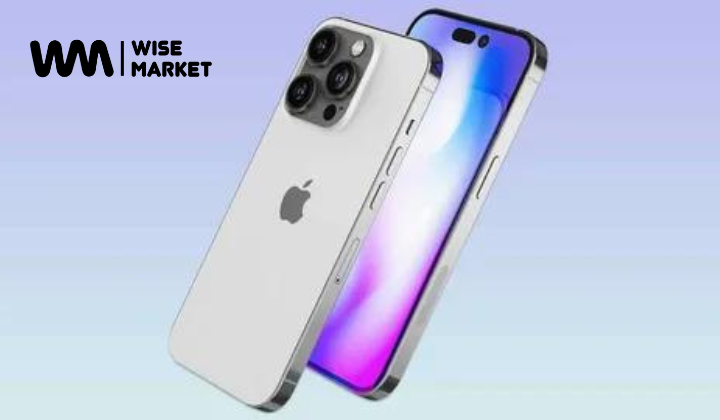-
Table of Contents
5G Revolution: Transforming Connectivity and Communication
The 5G revolution is transforming connectivity and communication in unprecedented ways. As the next generation of wireless technology, 5G promises to deliver faster speeds, lower latency, and greater capacity than ever before. This revolutionary technology has the potential to revolutionize industries such as healthcare, transportation, manufacturing, and entertainment. With its ability to support a massive number of connected devices and enable real-time data transfer, 5G is set to unlock new possibilities and drive innovation across various sectors. In this article, we will explore the key features and benefits of 5G, as well as its potential impact on our daily lives and the global economy.
The Impact of 5G on Internet of Things (IoT) Devices
The Internet of Things (IoT) has been rapidly expanding in recent years, with more and more devices becoming connected to the internet. From smart home appliances to wearable fitness trackers, IoT devices have become an integral part of our daily lives. However, the current connectivity options, such as 4G LTE, have limitations that hinder the full potential of IoT. This is where the fifth generation of wireless technology, 5G, comes into play.
One of the key advantages of 5G is its ability to handle a massive number of devices simultaneously. Unlike 4G, which can support around 2,000 devices per square kilometer, 5G can handle up to one million devices in the same area. This increased capacity is crucial for the IoT ecosystem, as it allows for seamless connectivity between a vast array of devices. Whether it’s a smart thermostat communicating with a weather sensor or a fleet of autonomous vehicles coordinating their movements, 5G ensures that these devices can communicate with each other without any disruptions.
Another significant impact of 5G on IoT devices is the reduced latency. Latency refers to the time it takes for data to travel from one point to another. With 4G, latency typically ranges from 20 to 30 milliseconds. However, 5G brings this down to a mere 1 millisecond. This near-instantaneous response time is essential for IoT devices that require real-time communication, such as autonomous vehicles or remote surgery robots. With 5G, these devices can transmit and receive data almost instantaneously, enabling faster decision-making and enhancing overall performance.
Furthermore, 5G offers significantly higher data transfer speeds compared to its predecessors. While 4G can provide download speeds of up to 100 Mbps, 5G can reach up to 10 Gbps. This blazing-fast speed opens up a world of possibilities for IoT devices. For instance, a high-definition video stream from a security camera can be transmitted in real-time without any buffering or lag. Similarly, large data files can be quickly uploaded or downloaded, making tasks such as software updates or data backups much more efficient.
In addition to improved connectivity and faster speeds, 5G also brings enhanced energy efficiency to IoT devices. With the current connectivity options, IoT devices often consume a significant amount of power, which can be a challenge for battery-powered devices. However, 5G introduces a feature called “low-power wide-area” (LPWA) technology, which allows IoT devices to operate on a fraction of the power they currently require. This not only extends the battery life of these devices but also reduces the overall energy consumption, making IoT more sustainable and environmentally friendly.
Overall, the impact of 5G on IoT devices is transformative. It revolutionizes the way these devices connect and communicate, enabling seamless connectivity, reduced latency, faster speeds, and improved energy efficiency. With 5G, the full potential of IoT can be realized, paving the way for a future where our devices are interconnected and work together seamlessly. As 5G continues to roll out across the globe, we can expect to see a proliferation of innovative IoT applications that will further enhance our lives and reshape industries.
Enhancing Mobile Broadband with 5G Technology
The advent of 5G technology has brought about a revolution in connectivity and communication. With its lightning-fast speeds and low latency, 5G is set to enhance mobile broadband in ways we could only dream of before. This article will explore the various ways in which 5G technology is transforming mobile broadband and revolutionizing the way we connect and communicate.
One of the key advantages of 5G technology is its ability to provide faster download and upload speeds. With speeds up to 100 times faster than 4G, 5G allows users to download large files, stream high-definition videos, and play online games without any lag or buffering. This means that users can enjoy a seamless and uninterrupted browsing experience, even in crowded areas with high network traffic.
In addition to faster speeds, 5G technology also offers significantly lower latency compared to its predecessor. Latency refers to the time it takes for data to travel from one point to another. With 5G, latency is reduced to as low as 1 millisecond, which is almost instantaneous. This low latency is crucial for applications that require real-time responsiveness, such as autonomous vehicles, remote surgery, and virtual reality gaming. With 5G, these applications can be executed with precision and accuracy, opening up a whole new world of possibilities.
Another significant advantage of 5G technology is its ability to support a massive number of connected devices simultaneously. With the Internet of Things (IoT) becoming increasingly prevalent, there is a growing need for a network that can handle the vast number of devices that are connected to it. 5G technology is designed to support up to one million devices per square kilometer, making it ideal for smart cities, smart homes, and industrial automation. This means that everything from traffic lights to refrigerators can be connected to the internet, creating a more efficient and interconnected world.
Furthermore, 5G technology is expected to revolutionize the way we consume media and entertainment. With its high speeds and low latency, 5G enables seamless streaming of high-definition content, virtual reality experiences, and augmented reality applications. This means that users can enjoy immersive and interactive experiences like never before. Imagine watching a live sports event in virtual reality, where you can feel like you’re right there on the field, or exploring a museum exhibit through augmented reality, where you can interact with the artifacts in real-time. 5G technology is set to transform the way we experience media and entertainment, blurring the lines between the physical and digital worlds.
In conclusion, 5G technology is revolutionizing mobile broadband by enhancing connectivity and communication in ways we could only imagine. With its faster speeds, lower latency, and ability to support a massive number of connected devices, 5G is set to transform industries and enable new applications that were previously unimaginable. From autonomous vehicles to virtual reality gaming, 5G technology is paving the way for a more connected and immersive future. As 5G networks continue to roll out worldwide, we can expect to see even more exciting developments in the years to come.
5G’s Role in Enabling Smart Cities and Infrastructure
The advent of 5G technology has brought about a revolution in connectivity and communication. With its lightning-fast speeds and low latency, 5G is set to transform various industries and sectors, including smart cities and infrastructure. In this article, we will explore the role of 5G in enabling the development of smart cities and how it can revolutionize our urban landscapes.
One of the key features of 5G technology is its ability to handle massive amounts of data in real-time. This is crucial for the development of smart cities, where a multitude of devices and sensors need to communicate with each other seamlessly. With 5G, cities can collect and analyze data from various sources, such as traffic sensors, surveillance cameras, and environmental sensors, to make informed decisions and improve the quality of life for their residents.
5G’s low latency is another game-changer for smart cities. Latency refers to the delay between sending a command and receiving a response. In the context of smart cities, low latency is essential for applications that require real-time responsiveness, such as autonomous vehicles and remote-controlled infrastructure. With 5G, these applications can operate with minimal delay, ensuring smooth and efficient operations.
Moreover, 5G’s high bandwidth capabilities enable the deployment of advanced technologies in smart cities. For instance, augmented reality (AR) and virtual reality (VR) applications can be seamlessly integrated into urban environments, providing immersive experiences for residents and visitors alike. Additionally, high-definition video streaming and video conferencing become more accessible, allowing for remote collaboration and communication.
The deployment of 5G infrastructure is also expected to revolutionize transportation systems in smart cities. With its ability to handle massive amounts of data in real-time, 5G can support the development of intelligent transportation systems (ITS). These systems can optimize traffic flow, reduce congestion, and enhance road safety through real-time monitoring and control. For example, traffic lights can be dynamically adjusted based on real-time traffic conditions, reducing waiting times and improving overall traffic efficiency.
Furthermore, 5G can enable the development of autonomous vehicles, which have the potential to revolutionize urban mobility. Autonomous vehicles rely on high-speed and low-latency communication to navigate through complex urban environments. With 5G, these vehicles can communicate with each other and with the surrounding infrastructure in real-time, ensuring safe and efficient transportation.
In addition to transportation, 5G can also transform other aspects of urban infrastructure. For instance, smart grids can benefit from 5G’s capabilities to monitor and control energy consumption in real-time. This can lead to more efficient energy distribution, reduced energy waste, and lower carbon emissions. Similarly, 5G can enable the development of smart buildings, where various systems, such as lighting, heating, and security, can be seamlessly integrated and controlled remotely.
In conclusion, 5G technology is set to play a crucial role in enabling the development of smart cities and transforming urban infrastructure. Its ability to handle massive amounts of data in real-time, low latency, and high bandwidth capabilities make it an ideal solution for the complex and interconnected systems of smart cities. From transportation to energy management, 5G has the potential to revolutionize our urban landscapes and improve the quality of life for residents. As 5G continues to roll out globally, we can expect to see more innovative applications and solutions that will shape the cities of the future.In conclusion, the 5G revolution is transforming connectivity and communication in significant ways. With its faster speeds, lower latency, and increased capacity, 5G technology is enabling a wide range of applications and services that were previously not possible. From autonomous vehicles and smart cities to virtual reality and remote healthcare, 5G is revolutionizing various industries and improving the overall quality of life. However, the widespread deployment of 5G networks and the adoption of compatible devices are still ongoing challenges that need to be addressed. Nonetheless, the potential of 5G to reshape connectivity and communication is undeniable, and its impact will continue to be felt in the years to come.



